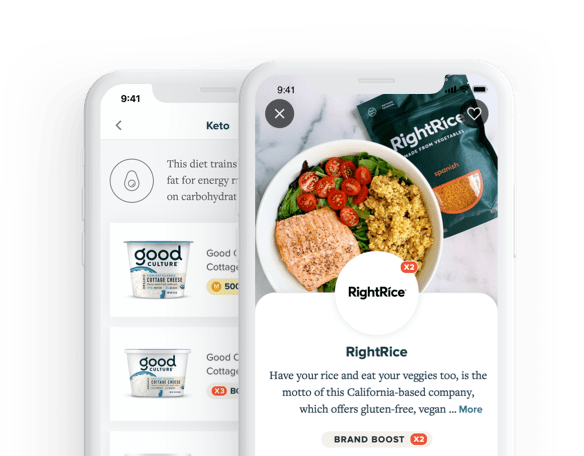Stories
Five Things I'm Feeding My 1 Year-Old
Kim McDevitt
Introducing solids to your baby is a big, exciting and somewhat daunting task, especially if you’re a first-time parent. Perhaps you started exclusively with cereals and purees, or instead went the baby-led weaning route right out of the gate. Whatever approach you took, rest assured that there’s not a one-size-fits-all approach when it comes to starting foods with a baby, and a combination of styles that work best for both the parents and the baby is usually best.
With that said, once your little one is around that one-year mark, hopefully you’ve gained a little more confidence in the feeding routine. And, your baby has also made the leap into really enjoying a variety of foods, eating multiple times a day, and transitioning to less breastmilk or formula and to a wider variety of foods.
If you haven’t already, start to transition away from purees and increase soft solids, allowing the child to explore various textures, shapes and tastes of foods with hands as well as with spoons. Since approaching his one-year birthday, my littlest has taken off with eating and it’s getting so fun (and always messy)!

When I'm thinking about what to give Casey, I think about it in the same way I think about feeding myself or my other two kids. Is he getting mostly whole foods (versus a lot of packaged crackers, cereals, etc.)? Is he getting exposed to a variety of colors (ie. different vitamins) from fruits and vegetables? Is he getting both healthy fats and protein? For appropriate growth and development, babies of this age need iron, calcium, vitamin D and omega 3 fats — this lineup is honestly not unlike the needs of older children and even adults, but the focus comes from the idea that they are no longer getting many of these nutrients from formula, breastmilk or fortified baby cereal. Supplementing with a high-quality baby vitamin D or multivitamin or continuing to use fortified baby cereal 1 to 2 times a day is also a great idea as babies transition their eating.
Here are five foods that seem to be on rotation for Casey almost daily.
1. Avocado
Packed with healthy fat and fiber as well as an assortment of vitamins and minerals, this is the first food Casey ate! Since it’s soft, it can be spread on teething crackers or toast, or it can be sliced, cubed or mashed. A staple in our house, everyone is eating avocado daily.
2. Hummus
I love hummus as an easy form of plant-based protein for the kids and typically we have one or two containers in my fridge at all times. I also like that the flavors are a bit more bold and savory with garlic, etc. which is great to introduce to kids at a young age. While you can easily make it at home, I'm more often than not buying it for convenience. When you do purchase hummus, look for the USDA Organic seal and try to make sure it's free from artificial preservatives.
3. Eggs
Eggs are a top allergen for young children, but unless otherwise guided by your pediatrician, you should still offer them from an early age. In fact, some evidence shows delaying exposure potentially increases the risk of developing an allergy later on. Eggs contain high-quality protein, iron and choline. When buying eggs, look for reputable certifications that signal high quality including USDA Organic, Certified Humane® and Free Range. (We’re partial to eggs from Pete and Gerry’s and Nellie’s Free Range.) Prepared any way you prefer, serve the entire egg to your little one.
4. Nut Butter
Peanuts and treenuts are perhaps the most commonly-known allergens, but as with eggs, exposing your baby to them is important and actually believed to help prevent the development of a nut allergy. Eating nut butter is a great way to get healthy fats and protein to your baby. We do a lot of toast cut into spears smeared with nut butter, but we also like to use nut butter to cover teething crackers and stir it into yogurt and baby cereal. Just make sure you’re buying a high-quality peanut butter with no added sugar or hydrogenated oils. (JUSTIN’S® has a great collection of clean nut butters.)
5. Fruit & Veg Pouches
My on-the-go staple for all my kids are high-quality fruit and vegetable pouches. I’m a huge advocate of giving kids both puree and whole foods to ensure they don’t develop texture aversions, but I do usually offer one as a snack or at one meal as they are such an easy way to get high-quality nutrients and calories. And, the pouch format allows them to do it themselves. Looking for USDA Organic and cold-pressed (HPP like those from Once Upon a Farm) is an added benefit that packs flavor into the pouch, making it taste just as good as homemade.
Finally, one of my biggest tips to parents, and my go-to approach: Don’t be restricted to a ‘baby’ menu. Children of all ages benefit from the same variety of foods as adults and can be given many of the same foods and meals you’re preparing for yourself. Just watch out for lots of added sugar or salt, and try to limit them for your baby.
What have you been feeding your little one lately?
Apple and the Apple logo are trademarks of Apple Inc., registered in the U.S. and other countries. App Store is a service mark of Apple. Google Play and the Google Play logo are trademarks of Google LLC.
